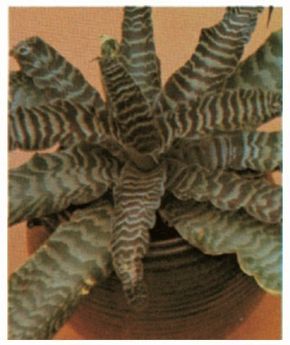Bromeliad Care
Bromeliads, in general, are quite easy to grow. Although they do not need a great deal of maintenance, there are certain things you should watch out for in order to keep your plant healthy.
In this section, you will learn about the types of pests and diseases that could compromise your plant's health and how to deal with these issues if they arise.
Advertisement
To prevent pests and diseases from infesting your plant, keep the natural vases formed by the leaves filled with water and change the water regularly.
Keep all dead and dying plant parts removed from the plant and the pot.
Watch the plants to make sure they are free of pests. If you put fresh flowers in the bromeliad vases, make sure that the stems do not stab the center of the plant.
Bromeliads are usually pest-free if you keep them clean. Remove all the dead leaves and trash so snails and slugs will not have a good place to hide.
Scale is probably the biggest problem. Soft brown and hard black (fly speck) scale can be scraped off with a fingernail, worked off with a soft brush and soapy water, or controlled with 50% malathion applied at the rate of one tablespoon per gallon of water.
If you keep the humidity up, and if you wash your bromeliads regularly, red spider will be discouraged.
If aphids attack the flower spikes or tender bromeliads, use an insecticide for sucking insects. Wash off both the insecticide and the insects after the aphids are dead.
Bromeliads are almost disease-free when well grown. Brown tips on otherwise healthy plants are usually due to the salts and other substances in the water.
Avoid fungus diseases by cleaning up trash and preventing the air from becoming stagnant.
Bromeliads are easy to propagate. In the next section, learn everything you need to know in order to propagate your plant successfully.
